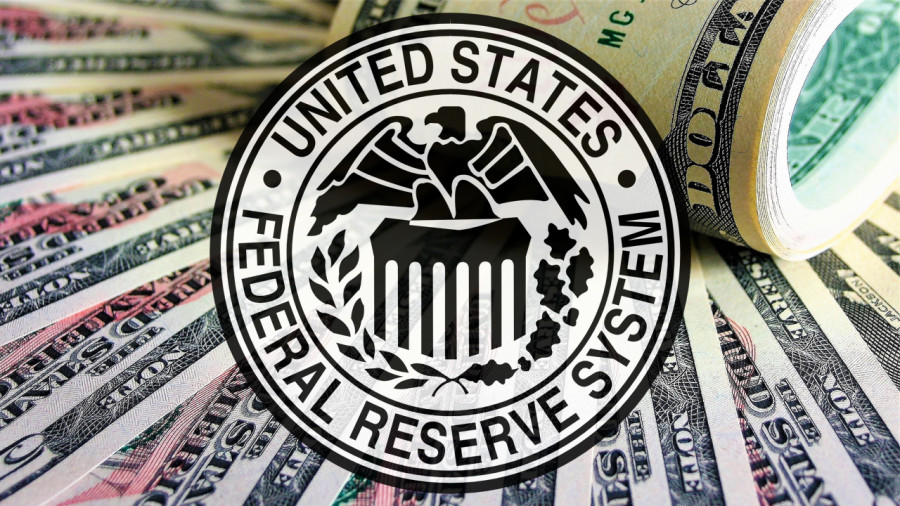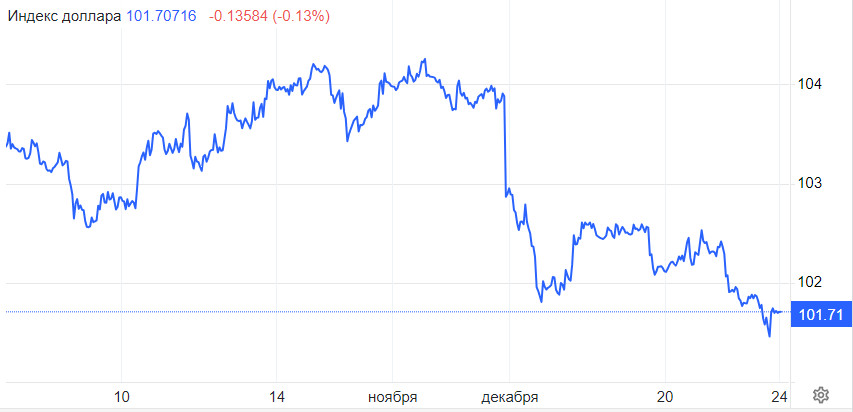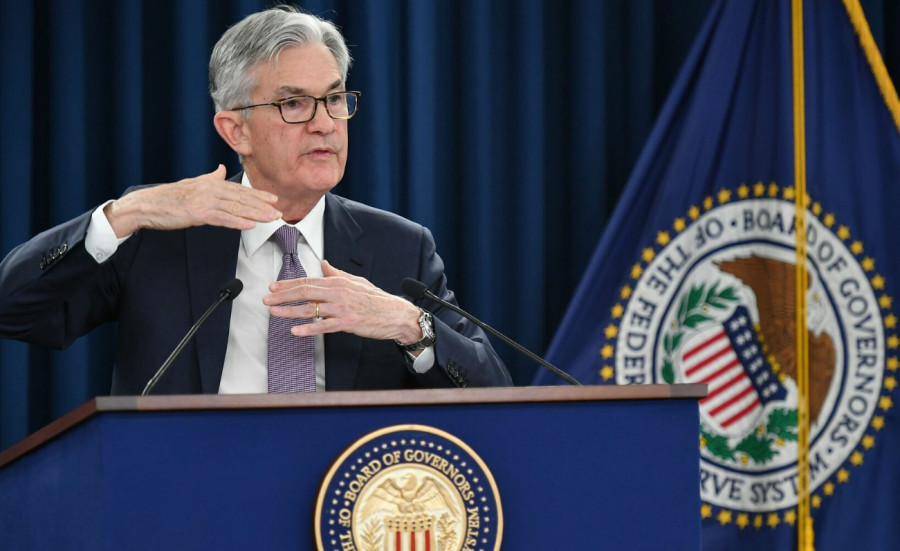December posed a challenge for the US dollar. Its index has already dropped to 101.1. There is a risk of falling to 100, but it may not come true. Let's consider ongoing trends, market sentiment, and expected scenarios. Let's try to puzzle out whether the US dollar can regain its dominance in early 2024.
The past week dealt a strong blow to the US dollar, which was already in trouble. The PCE inflation index for November decreased from 2.9% to 2.6%, and the core PCE indicator fell from 3.4% to 3.2%.
These metrics have only added to the selling pressure on the greenback, providing further arguments for the Federal Reserve in favor of monetary easing.
Forecasts set for the December policy meeting have already been met: the forecast ranges for 2023 were 2.7-2.9% for PCE and 3.2-3.3% for Core PCE.
The dollar index fell to 101.1 points. In the near future, we can expect a further depreciation towards the support level of 101.1 points on the wave of euphoria.
However, December may be a period of reaching the lowest values for several reasons.
The probability of an interest rate cut at the March 2024 meeting, according to FedFunds futures, increased over the week from 70% to 88%. This consensus could have already been priced in by market participants.
The level of the American currency index now corresponds to the values of July 2023, when the official funds rate was 5.25%. Curiously, the market acts as if the rate cut has already happened.
On the final week before Christmas, traders commonly close their annual positions. This time, market participants quit their transactions, causing a suspension of the overall bearish trend and its correction.
Historical data points to a downtrend for the dollar in December. Over the past 20 years, the average decline was 0.74%, and over the past 5 years - 1.56%.
This month, the US dollar index has already dropped by 2.1% from 103.3 points to 101 points, sharper than expected. However, a retracement is possible within the overall downtrend.
From a technical point of view, the correction zones cover 102.2-102.5 points, where the gap may close on the daily chart. This could happen this week or in early 2024.
Interestingly, if December is traditionally a weak month for the dollar, January, on the contrary, is characterized as the strongest. Over the past 25 years, the dollar rose on average by 0.7% in January.
Thus, in the coming weeks, before new economic data from various countries is released, we are likely to see some recovery in the dollar to somewhat offset the excess decline in December.
HSBC economists are also bullish on the US dollar, looking ahead to 2024.
In the near future, the US dollar is expected to take a defensive position. However, the impact of yield differences on the US currency may be small, since the Federal Reserve intends to pursue easing policy along with other central banks, regardless of market forecasts.
HSBC predicts that the US dollar will receive support in 2024 due to the slowdown in the global economy. In this context, the risks of recession are still relevant, and the dollar will continue to act as a safe haven, bringing relatively high yields.
Any better-than-expected data could disrupt rate cut expectations. Besides, geopolitical events could also trigger a rally in the DXY.
The level of 103.00 is worthy of note on the daily chart. Once this level is overcome, the next important milestone to reach is 103.50.
Meanwhile, it is vital to maintain and close trades above the key 101.70 level, which was recorded at least on August 4 and 10.
If this level is successfully surpassed, the next target becomes 100.82, corresponding to the lows of February and April. If this level is broken, nothing will stop the DXY from heading below 100.
Year marked by rate cuts
Fed policymakers rotate annually. Interestingly, in 2024, voting members of the rate-setting committee are somewhat more hawkish than in the outgoing 2023. However, this is unlikely to change the prospects for a turn to lower interest rates next year.
In fact, many analysts are making the opposite argument. If inflation rates continue to decline faster than expected, Fed policymakers will want to cut rates even by more than the three-quarters of a percentage point implied in the latest forecasts.
The Fed's rhetoric has become notably more dovish in the second half of the year. So, evidence of easing price pressures and a cooling labor market are paving the way for the Fed's rate cuts following the cycle of rate hikes from March 2022 to July 2023.
In particular, those policymakers who were the most hawkish, including Federal Reserve Governor Christopher Waller, have abandoned their previous support for raising rates.
After the central bank kept rates unchanged in December, Jerome Powell noted that the Fed's next question would be the timing of rate cuts. The market is gearing up for March.
Even if the cuts come later and more gradually, as policymakers have since tried to signal, the direction of these moves reflects the Fed chairman's dovish reversal.
One reason is that as inflation in the economy declines, firms that were able to raise prices this year will find it more difficult to do so next year and may have to resort to cutting labor costs to protect their profits. The signal of impending policy easing is an attempt to prevent this kind of unpleasant disinflationary dynamic.
There's another rationale for cutting rates next year. As inflation declines, keeping the benchmark rate steady raises the real cost of borrowing, so the Fed should lower its interest rate to prevent it from tightening too much.
The new year will bring plenty more data ahead of the Fed's next meeting on January 30 and 31, including data on the US unemployment rate, which now stands at 3.7% and is just a tenth of a point higher than it was when the Fed started raising rates.

























